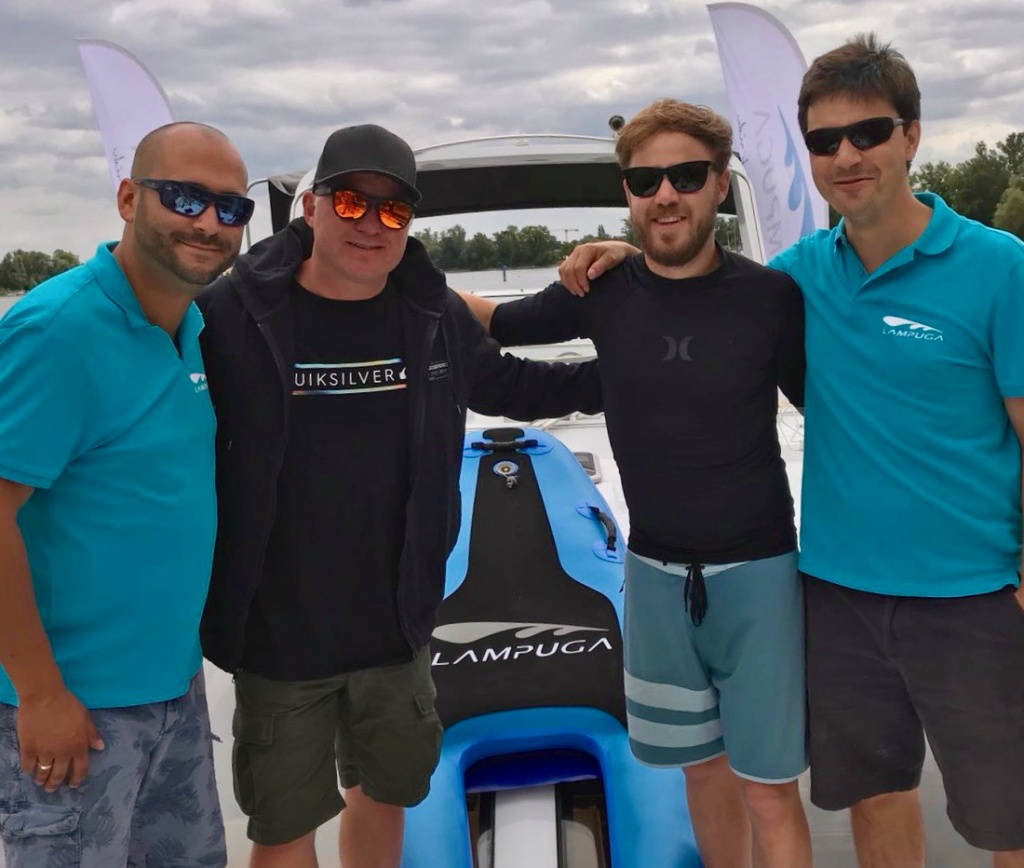Lampuga is a German manufacturer of electric jetboards based in Rastatt. In the summer of 2020, they started shipping the Lampuga Air model.
After four years of enjoying our Lampuga Air and many enthusiastic customers, an era is coming to an end. From 2025, the Lampuga Air will no longer be sold to end customers through dealers such as E-SURFER, but will be rented out in holiday resorts.
However, there is no reason to be sad. The original inventors of the Lampuga brand have now launched a successor:
The Mo-Jet Air is not only a further developed inflatable jet surfboard, but also modular. It's basically a jetboard, electric bodyboard, diving scooter and tender boat in one. Find out more at: Mo-Jet.
In June 2018, the Lampuga team visited us in Berlin for the first time to present their inflatable jetboard. Of course, we were able to test the Lampuga Air (at that time still as a pre-series model) on the Berlin waterways. The following photo was taken during the test.

At the beginning of 2020, we received our first demo board (3 months before the official launch) and became one of the first dealers for the Lampuga Air.
Until 2023, we were in close contact with the Lampuga team and incorporated a lot of feedback into the product. To do this, we regularly visited the factory. We recorded this for our E-SURFER YouTube channel in the following video.
After a “change of management” in 2024, the relationship became more difficult. Lampuga's focus changed. Away from sales through retailers and towards jetboard rental in vacation areas. To do this, hotel chains were approached worldwide and the conditions for retailers got worse and worse.
It's a shame when you've worked so closely together for so many years. Then, in 2025, it was completely over. No more sales through distributors such as E-SURFER.
We had a great time on the water with the Lampuga Air and wouldn't have wanted to miss it. We have many photos and videos to capture those memories.
It is almost ironic that the original inventors of the Lampuga brand launched their new jet-board in 2025.
Under the name Mo-Jet, there is now not only a further developed version of an inflatable electric surfboard, but also a whole system of modular components so that the drive can also be used as an electric bodyboard, a diving scooter or even as a tender.
More about this at Mo-Jet.
Lampuga Air Jetboard is a surfboard with motor. The board consists of a SUP hull and a powerbox. The power box contains the removable battery, the electronics and the electric jet drive. Acceleration is by radio remote control and steering is by body weight.
The Lampuga eSurfboard costs 14,999 EUR incl. 19% VAT. The optional travel bag set is 699 EUR. All colors have the same price.
The Lampuga Air can achieve speeds up to 45 km/h.